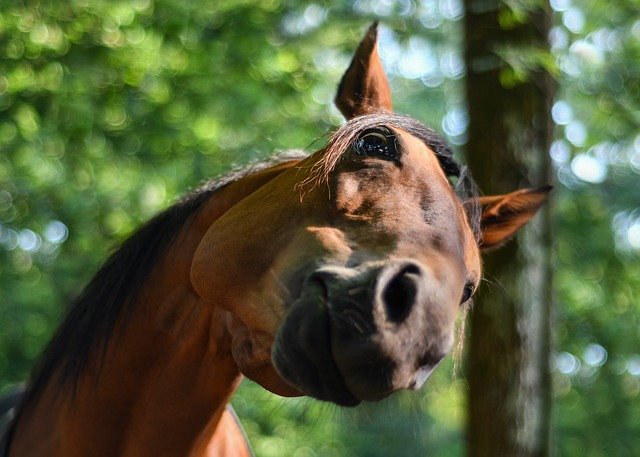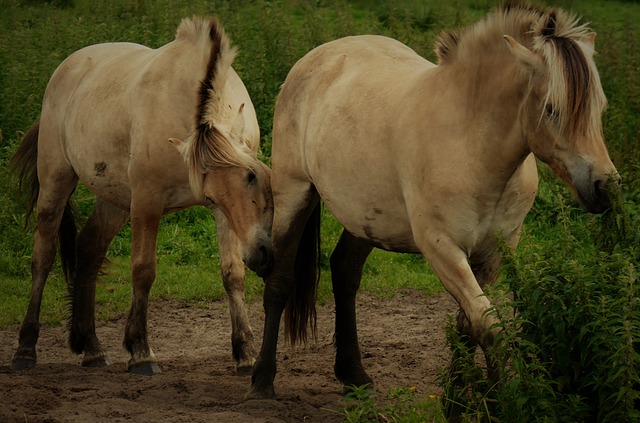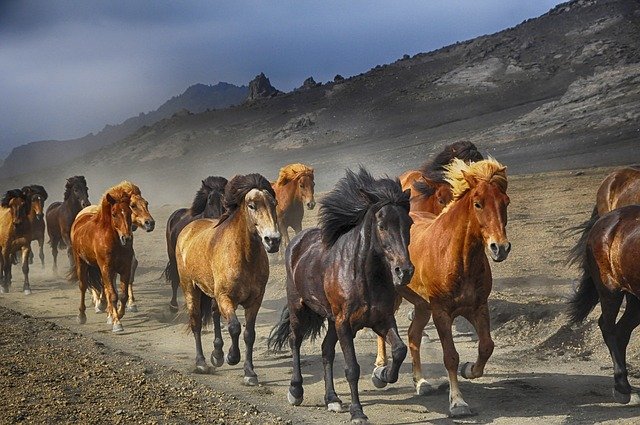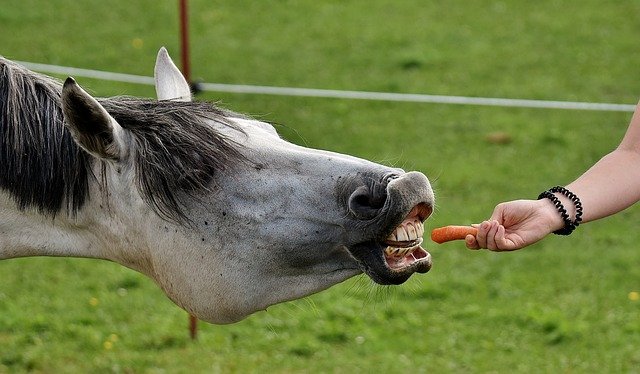Like us humans, horses have a pocket full of habits, and not all are necessarily good. This week, I will be talking about the frowned-upon habit of biting, the potential reasoning behind it, and how one might take action to prevent such behavior. When a horse takes a step to bite in the equestrian community, it is generally met with an immediate punishment of some capacity, being viewed as a behavioral flaw that needs to be corrected.

While I agree that my horse should not be biting at me, this assumption has done more damage than good due to the lack of understanding that many horse owners inhabit. There’s more behind the action of biting than most care to explore, and by merely watching our horses a bit closer, we might be able to prevent this habit in the future a little bit better.
So why do horses bite?
Unfortunately, the answer to this question is not so black and white as the list of reasons for biting is anything but a short one. To name a few, the habit of biting can stem from fear or pain-induced triggers, assertions of dominance, inter-male interactions, playful tendencies, or instincts of the maternal, protective, learned, or redirected capacity. Each of these topics can be applied to both human-to-horse and horse-to-horse biting instances. To further break down these reasons, let’s consider horses’ natural behavior, typically found in a herd situation.
When we think of horses that have been integrated into the community for human use, it is often forgotten that they are creatures of prey. As prey animals, horses conjugate in herding groups to optimize survival and build a foundation for lineage. Consider the normal day-to-day behaviors of herd horses, and then compare that to what is asked of them in a domestic setting, such as your barn or stable. While we mean no harm to our beloved four-legged friends and take the utmost care of them, there is no denying that humans have changed the way horses live and, in doing so, changed their behaviors. The herd mentality is an innate characteristic in every horse, meaning you can take the horse out of the herd, but you can never truly take the herd of the horse.

The Role of Biting in The Herd.
In a herd setting, horses have several communication methods, and yes, one of those methods is, in fact, the action of biting. Often, the horse doesn’t even have to bite the other for the message to get across fully. There are different meanings for the way a horse bites or even how the bite mark is positioned. In other words, biting habits can vary depending on what sort of message the horse is trying to convey. For instance, a slight nick on one horse can be a warning shot or maybe a deeper wound signifying that there has been a change in the herd’s pecking order.
Among the herd, the worst for biting will tend to be stallions clueing into the inter-male relations discussed previously. In a herd situation, the lead stallion will often use biting to keep the group in their respective places, and in many cases, will use biting to fight off young stallions out for their occupation. As the herd leader, it is prevalent to see a stallion biting at other horses as a form of communication.
The Fight or Flight Response.

Whether in a herd or a stall, horses have two modes when they feel danger is near: fight or flight. If there is a risk present, they are more likely to head in the other direction. This trait is why horses could once roam wild, giving them the key to staying alive in more severe situations. Take that same horse and put them in an enclosed stall or pen, and you have just taken away their ability to run. Now, without flight, your horse is only left with a fight. While equestrians mean no intentional harm to their fury four-legged beasts, we are considerably changing their natural living conditions by putting horses in a domestic setting.
Some Common Causes of Biting.
As I have mentioned before, you can never truly take the herd out of the horse, which tends to be where the two species run into trouble. As horses in herds use biting to communicate, they will do the same thing with their owner. In other words, they are S repeating what they innately know. Think about it like this: If a horse is put into an uncomfortable position, they will react in a way that aids in their escape. For example, girthy horses tend to nip where the girth is being tightened. While you might think your horse is just lazy that day, there could be an underlying issue, like an ulcer creating considerable pain around their abdominal area. So, your horse is in pain, without a foreseeable escape route, turns his head and nips at you. The bite is not meant to be an aggressive action, but more of a “hey, that hurts.”
Now, I am not saying that this behavior is therefore condoned, yet I am implying that there is a larger issue at the front more times than not. This form of “communication” can be seen in many instances. In the case of stallions, some human practices almost seem to be asking for the biting behavior. In modern equine breeding practices that include artificial insemination, a stallion is usually presented with a tease mare before directed to mount the fake horse. In that process, the stallion cannot get to that particular mare, disrupting the natural breeding rituals. As a result, that stallion can become irritable, leading to redirected infliction on the nearest personnel.
Treating your horse is also a large contributing factor to biting behavior, especially as the holidays are upon us. While I am not against giving my horse the occasional molasses cookie, it is vital to do so carefully to avoid the development of bad habits. Feeding your horse treats from your hands is most often a perfect recipe for biting. As you hand-feed your horse, they quickly learn to invade your space with nudging, pushing, and biting. Positive reinforcement with treats is a perfectly acceptable training method but must be done with a careful technique. Whenever you give them a treat, make sure that they have done something that solicited them receiving that said treat. In other words, they have to work for a reward.

Prevention
While biting can be a difficult habit to break, it is not impossible. First, try watching how your horse behaves typically in a herd to understand their day-to-day mannerisms better. There you can more clearly see where your horse’s comfort zones lay. When transitioning to the actual training, it is essential to isolate the source of biting before continuing. Identify what makes your horse nip at you, and from there, build a plan of action. Biting involves the head, so the best course of action is to get better control of their head. Depending on where your horse is in their training process, you can do this by utilizing a round pen or lunge line to begin. Any training techniques that involve giving better head control would be beneficial in this situation.
For more specific conditions, such as girth-sensitive horses, try to identify any health issues your horse is suffering from. For the more difficult horses, some may have to resort to the use of punishment, or negative association. The quote on quote punishment doesn’t not need to mean a slap or an intensified whip pressure, but simply a heavier workload after the offense. For example, if your horse tries to bite, instead of harshly reacting with a bat of your wrist, try backing your horse up until they are softened. This helps them to associate a task they don’t particularly love with the bad habit, decreasing their chances of repeating the original offense. In this case, it is crucial that the sentence immediately follows the offensive and not a minute later. By doing this, you can be sure that your horse will associate the negative punishment with the biting instance. If the punishment is even a hair too late, horses will not understand your intended correlation and might even make them get better at getting away with their bad habit.
